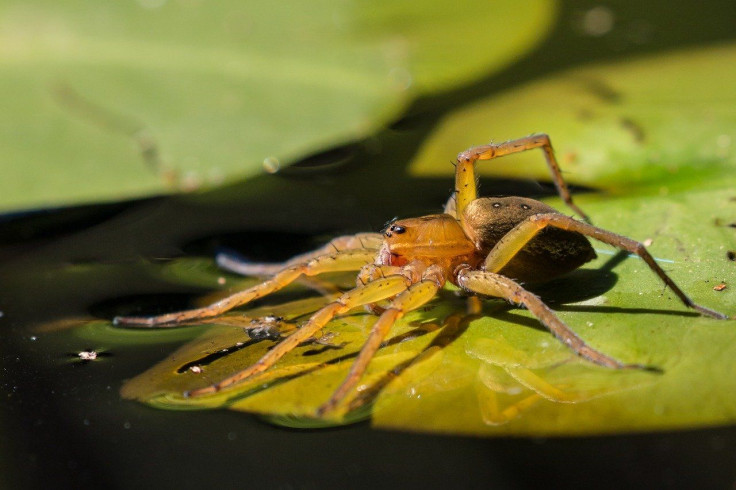Nearly A Fifth Of Spider Families Live In Or Around Water, Study Finds
KEY POINTS
- Contrary to a popular misconception, many spiders actually thrive in aquatic habitats
- A new study found that nearly a fifth of all spider families are associated wih aquatic habitats
- These aquatic spiders did not follow the expected evolutionary patterns
- The results show that spiders may be predisposed to living in aquatic habitats
It is a common misconception that all spiders live on land. But, the truth is that many spider species thrive in or around aquatic habitats. In fact, the researchers of a new study published in the Zoological Journal of the Linnean Society found that quite a significant percentage of spiders are actually associated with aquatic habitats, whether freshwater or saltwater. The researchers also shed light on how spiders went back to living aquatic lives.
For their study, the researchers from the California Academy of Sciences and the William Patterson University focused on the spider group Dictynidae, which contains diverse aquatic spiders. The team studied the specimens via DNA analysis, taking note of the instances when a species evolved an association with water.
Interestingly, the researchers found that members of 21 out of the 120 spider families displayed associations with aquatic habitats. This represents about a fifth of all known spider families, suggesting that spiders may be more aquatic than previously thought.
The researchers also concluded that, even if some of the aquatic spiders do share a common spider ancestor, many of them actually independently evolved to have similar traits. This is a process called convergent evolution wherein different organisms evolve similar traits as a result of adapting to similar environments. It is the opposite of divergent evolution wherein related species develop different traits.
With this in mind, the researchers set out to find whether certain characteristics are advantageous to spiders when it comes to living in aquatic habitats.
“We found that many adaptations are widespread across water-dwelling spider species, while other water-dwelling spiders lack these favorable characteristics entirely,” senior author Lauren Esposito, Ph.D., said. “We were surprised to find that these traits — although certainly helpful — are not a prerequisite to being able to withstand a life submerged in water.”
In other words, the results showed that spiders developed a wide variety of adaptations, with some of the spiders that developed traits thought to be useful for aquatic life not living aquatic habitats, while some of the spiders that are actually associated with aquatic habitats lacked these traits.
This shows that, perhaps, spiders are predisposed to living fully or partially aquatic lives. While this was no longer surprising to the researchers since all terrestrial life originated from the ocean, what was interesting is how the spiders went back to the water after living terrestrial lives.
“They didn't follow the evolutionary steps we expected them to,” Esposito said. “Every time we identified a saltwater spider species, its closest relative was living on land, rather than around freshwater. This tells us that perhaps spiders are pre-adapted to live in various types of water habitat, and don't need to take evolutionary baby steps from land to freshwater to saltwater.”
For future studies, the team will continue to analyze how spiders evolved to go back to aquatic habitats.
"With a deeper understanding of these broad evolutionary patterns, we hope to tease apart certain physiological characteristics and physical traits important for living in aquatic environments," Esposito said.

© Copyright IBTimes 2024. All rights reserved.












